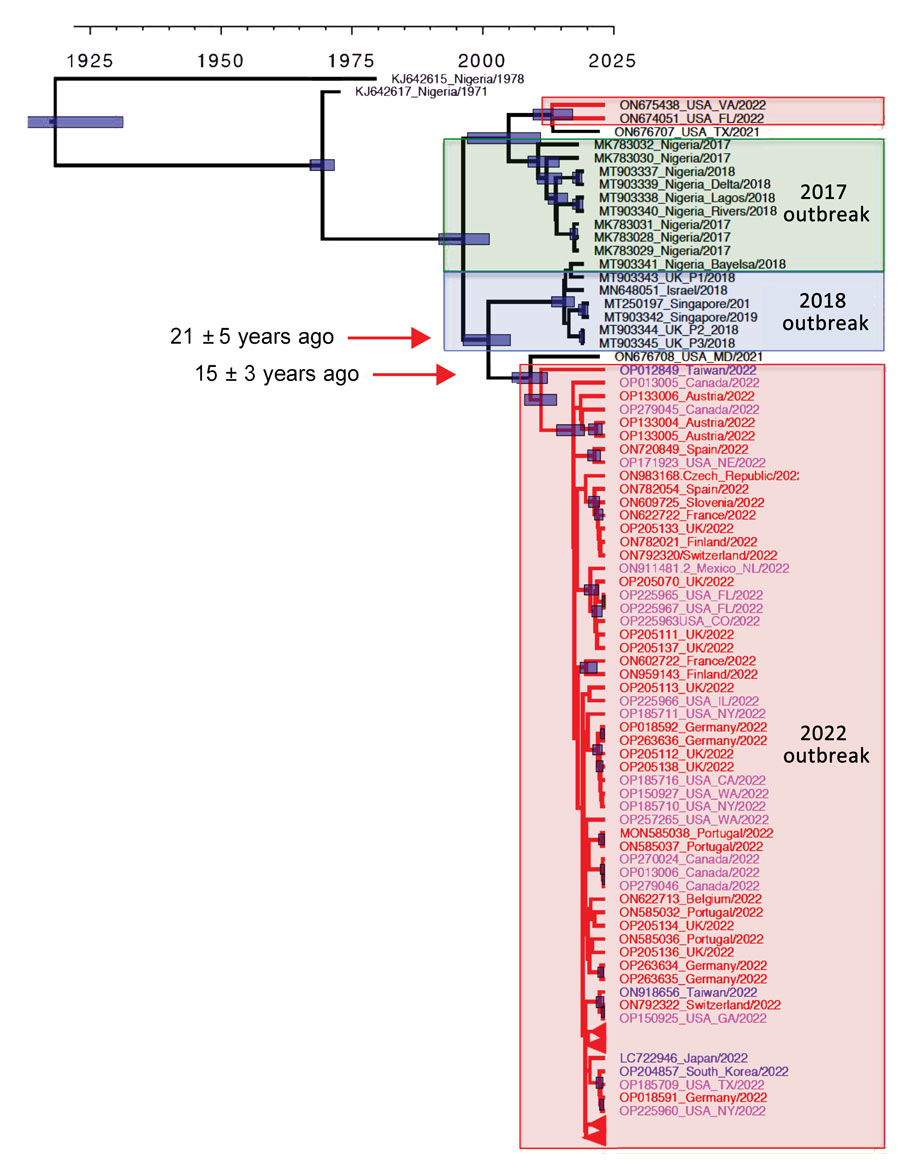Volume 29, Number 2—February 2023
Research Letter
Monkeypox Virus Evolution before 2022 Outbreak
Figure

Figure. Origin of the 2022 oubreak of monkeypox virus (MPXV) infections. A) MPXV phylogeny of the 2022 outbreak, created by using 87 sequences from the 2022 outbreak together with sequences from past cases. Whole-genome Bayesian phylogeny and molecular estimates of divergence times were performed in BEAST 2.6.7 (https://beast.community) by using a generalized time reversible substitution model and a molecular clock of 5 × 10–6 substitutions/site/year under the assumption of constant population size. The model was run for 1 million generations and a burn-in of 10,000 trees. The maximum clade credibility tree is shown, and blue bars indicate uncertainty in node age for nodes with >50% support. Red indicates tree branches for 2022 strains. Sequence names for the 2022 outbreak are color-coded as follows: red, Europe; pink, North America; and blue, Asia.